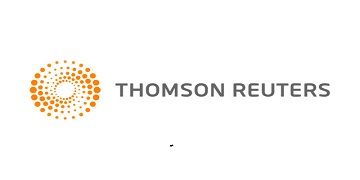The European Commission published the VAT in the Digital Age (ViDA) reforms in December 2022 to respond to the challenges of the digital economy, stem the loss of billions of euros in VAT revenues, and make the tax system more efficient for businesses.
The reforms, once enacted, will require businesses to submit real-time transactional data to tax authorities, and should call for strategies focused on not only reinventing tax systems but the life cycle of the transaction compliance process.
“The whole nature of VAT and indirect tax compliance is changing with the increasing digitalisation we are seeing globally,” says Kirsty Kerr, identifying new digital reporting requirements, such as SAF-T, an international data exchange standard, and increasing e-invoicing country mandates as typical of this.
“ViDA is a series of regulations that will lead to a common standard for e-invoicing across Europe and will influence e-invoicing mandates globally. It can be a real gamechanger.”
Although EU member states must still unanimously approve ViDA, regulations are expected to come into force in 2024-28. This is already having an impact on many countries and those with existing e-invoicing regimes, such as Poland, Italy and France, who are updating them to comply with ViDA. Others, including Belgium and Spain, are actively discussing e-invoicing requirements with plans to accelerate implementation as of 2024.
For tax professionals and accountants, ViDA brings major changes, and they need to understand its impact on their businesses.
“While the vision of ViDA is to make VAT reporting more straightforward and transparent, it will push companies to make significant IT investments,” says Kerr.
“It will also force businesses to shift from being reactive to proactive and put a proper strategy in place to be compliant. These changes will allow for better tax risk management and enable the tax team to participate more in strategic decision-making.”
She explains that, in relation to record keeping, ViDA will require businesses to include additional information on their invoices, such as the VAT ID number of the supplier and customer, place of supply and VAT rate applied.
In terms of reporting, meanwhile, it proposes changes to standardise e-invoicing that will become mandatory for intra-community transactions and an option for domestic transactions as of 2028.
ViDA’s impact will be far-reaching – applying to all businesses that sell goods or services to EU customers, whether they themselves are EU-based or not.
Challenges
The speed of change could prove challenging for many businesses. “If companies are not prepared and don’t have the technology in place to manage e-invoicing in countries where they operate, they will risk penalties for non-compliance and may be prevented from doing business in those countries,” says Kerr.
Another major challenge is any shortcomings in existing technology. According to Thomson Reuters 2022 Corporate Tax Report, 24% of companies still use spreadsheets and manual processes for compliance while 41% use a third-party software with few automated feeds, which is not connected to the Enterprise Resource Planning (ERP) system.
“Understanding your current ERP set-up and its limitations is probably the biggest challenge,” says Kerr.
“Many businesses have multiple ERP systems, as well as multiple systems for billing, accounts payable etc – they need to triage and prioritise each in line with the e-invoicing mandates.”
And she warns: “If a company does not have the correct data in the correct format, it will be unable to submit an e-invoice and be subject to fines and penalties for non-compliance.”
Another problem is the limited standardisation in e-invoicing to date. “Each country has different filing requirements and technical protocols making it even harder for global businesses to stay compliant,” says Kerr.
“In addition, every county has different specifications about what data needs to be reported, adding another layer of complexity for organisations operating in multiple companies.
“Tax regulations are also constantly evolving, forcing tax departments to constantly monitor the regulatory environment in countries where they operate, as well as in countries where they intend to expand.”
While many companies’ tax departments are aware of the new ViDA requirements, mobilising their organisations to respond effectively represents another challenge.
“This is an opportunity for the tax department to take a leading role – partnering with IT and educating the rest of the organisation about the upcoming changes. As tax experts, they are in the best position to interpret, articulate, and disseminate what is changing to the VAT rules throughout the organisation – especially to the CFO,” says Kerr.
“By taking a leading role in educating their colleagues, they can provide insights into the tax benefits, risks, and considerations associated with different compliance options, helping the company build a business case for automation.”
ViDA benefits
For many businesses, ViDA brings an important opportunity to reassess their entire global compliance process and automation and build a case for finance transformation and ERP upgrades.
“The more forward-thinking businesses will see e-invoicing as one part of the transaction lifecycle. They will look to fix data issues upstream with master data reviews, enable real-time tax calculation and then look at how e-invoicing fits into their overall indirect tax compliance process,” says Kerr.
“This strategy provides a great opportunity for businesses to get access to live transactional data for data analytics and KPIs so they can make better informed business decisions.”
However, there are concerns that some companies may get left behind.
“SMEs may not have the resources, finances or technical set-up to comply with ViDA. They may not have the budget to assess or upgrade their existing IT systems nor the personnel to lead the multi-function business groups needed to comply,” says Kerr, but notes they can take advantage of small, local solutions.
Action plans
Kerr identifies a few critical steps that businesses should take now.
Firstly, they need to fully understand their ViDA global obligations, priorities and the deadlines, before building a multi-function team in which all stakeholders – Accounts Payable (AP), Accounts Receivable (AR) and IT – have clear and transparent ownership and responsibilities.
Next comes assessing their ERP set-up for gaps to ensure data quality. “The real-time nature of ViDA requirements means you simply won’t have the time to solve large-scale data issues,” says Kerr.
Developing a comprehensive budget is also critical to ensure financial resources are always on hand, providing a sense of security.
The next step is to assess global solution providers in the marketplace and look for a solution that fits into the business’s lifecycle compliance.
Global provider
One major provider that fits this bill is Thomson Reuters, which has partnered with Pagero, a network for e-invoicing, to offer customers an end-to-end solution for the whole transaction lifecycle: tax calculation, e-invoice submission, post audit indirect tax filings.
Its ONESOURCE solution meets requirements for data quality upstream with ONESOURCE Determination, which calculates tax automatically, accurately, and in real-time. With Pagero in place, businesses can manage invoices, validate e-invoice data, and submit e-invoices to tax authorities globally in real-time.
ONESOURCE Indirect Compliance, meanwhile, automates all indirect tax filings – global VAT\Goods and Services Tax (GST) returns, and other digital report filings such as SAF-T. Having all this data in the ONESOURCE platform futureproofs businesses against the changing nature of indirect compliance, supporting reconciliations, analytics and reporting.
Thomson Reuters is now working on a solution to manage e-invoicing obligations seamlessly with connections to the ERP system, simplifying the extraction of data and allowing businesses to quickly scale up globally.

